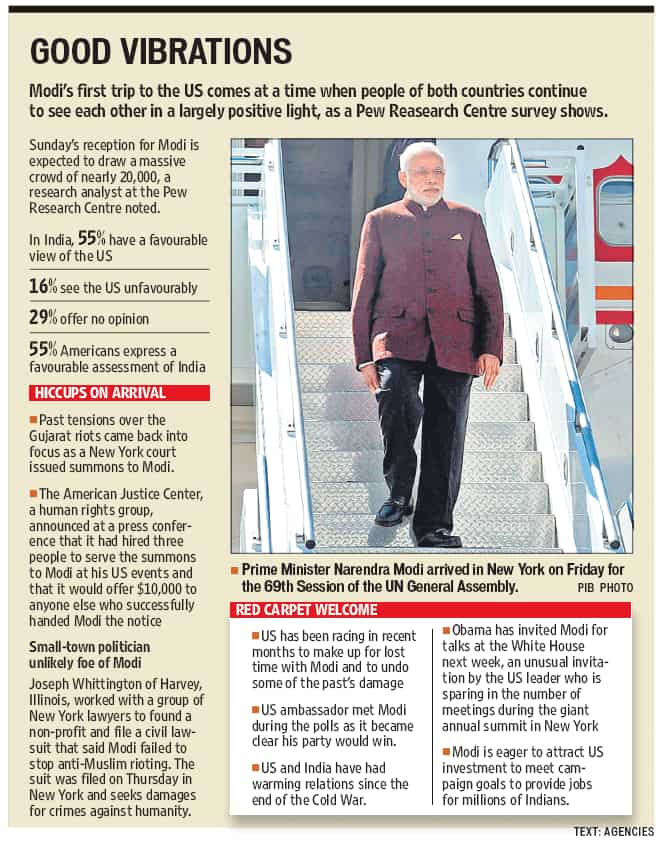Fringe groups in US fray the red carpet for Modi
While the overall tone of Prime Minister Narendra Modi’s visit to the United States is quite positive, several groups made strong attempts to highlight their own narrow set of concerns about America’s relationship with India.
While the overall tone of Prime Minister Narendra Modi’s visit to the United States is quite positive, several groups made strong attempts to highlight their own narrow set of concerns about America’s relationship with India. While such attempts would be anticipated ahead of any important summit, the number and diversity of these campaigns have added an aura of negativity ahead of Modi’s arrival.

The attempts to disrupt the visit and highlight specific issues include: a summons for Modi to appear before a New York Federal Court related to the 2002 Gujarat riots; a new request by two powerful congressional committees launching another review of India’s trade barriers (the first version of the report is due mid-December); and newly-released reports and letters by various trade groups which attempt to judge Modi’s economic policies through their own lenses.

There will also be a congressional hearing on the 1984 anti-Sikh riots; not because the BJP is implicated in the riots, but to pressure the Modi government to pursue claims. Even the prime minister’s eating habits were the cause of some forced consternation, as multiple publications tried to paint the fast as potentially offensive.
The visit, at least the Washington, DC portion, suffers from comparisons to the 2005 visit of Manmohan Singh, his first as prime minister. Singh was accorded the first State Dinner of the Obama presidency and made an address to a joint session of Congress. Neither of these honors will be given to Modi due to congressional scheduling issues and Obama’s reluctance to give more than a few State Dinners during a year.
Even when it comes to substance, the visit is not expected to be as robust as Singh’s visit in 2005 when the agreement on civilian nuclear trade was announced. A
key difference is that Singh had been in office for over a year, while Modi is in his first five months.
Both governments are clearly eager to get a sense of the other sides’ interest in deepening our partnership before offering any dramatic new proposals. The US does not offer aid to the levels promised by other governments, so any commitments related to industrial development will involve smaller funding levels and other forms of non-monetary cooperation.
That the visit is happening so soon is in itself surprising and should be the main focus.
It will be critical to see how much the anti-India campaigns noted above influence Americans’ perceptions about India. Few Americans have deeply-held convictions about India’s potential role as a strategic partner, or are familiar with India’s performance in the last decade as a rising economic partner.
This holds true for many business boardrooms, as well. The unfortunate truth is that when these negative campaigns are conveyed through the India coverage in
major news publications, this one-sided portrayal can become the only India content Americans get during the year.
The reasoning behind the US’s decision to make a stronger political bet on improving strategic ties with India a decade ago remain strong. Modi has the interest and influence to be a reliable partner in this regard if we can find initiatives which make sense to both sides. He has a greater ability than his predecessor to carry out his commitments.
There is a danger in allowing narrow interests—including those with valid concerns—to steer our bilateral relationship into an unproductive direction. There is far too much at stake- today and in the decades to come.
The author holds the Wadhwani Chair in US-India Policy Studies, Center for Strategic & International Studies.





